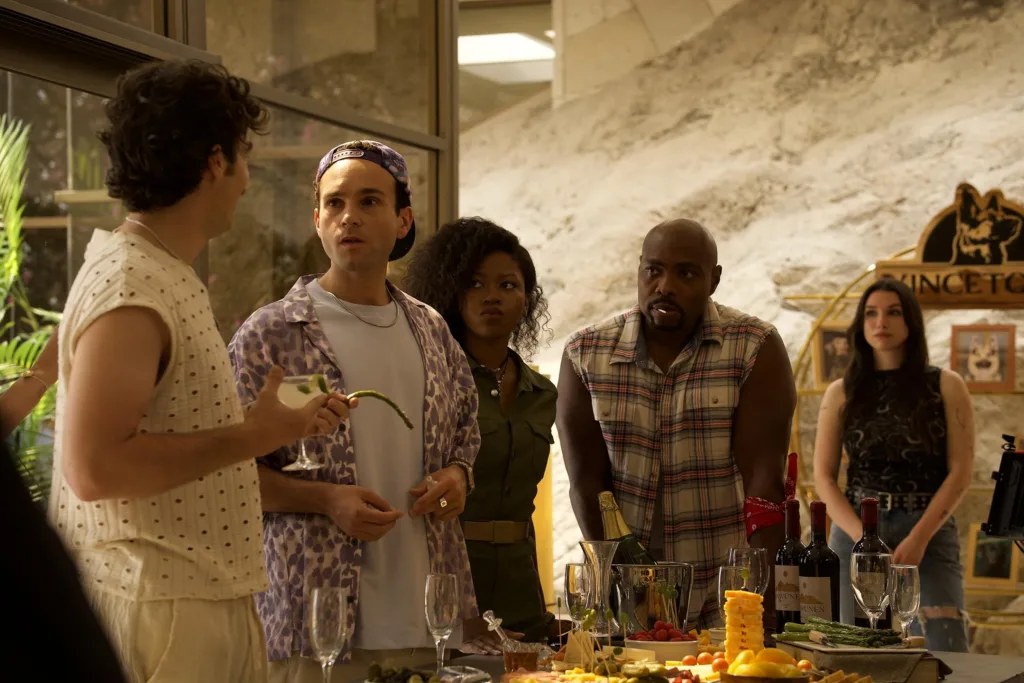Every so often, a film’s premise lands on your desk that feels like a perfectly engineered B-movie setup, the kind that could either become a cult favorite or a cautionary tale. “A Breed Apart” barks loudly with that kind of energy right from the start. The core idea is deliciously simple: a collection of social media mavens, each chasing viral fame, are lured to a remote island.
Their host, a flamboyant fellow influencer, promises a high-stakes contest with the island itself as the grand prize. The catch? The island is teeming with some very un-photogenic, genetically agitated dogs. This isn’t your typical influencer retreat; it’s a creature feature with horror-comedy ambitions, a spiritual successor perhaps, in its wild-canine-chaos theme, to the 2006 film “The Breed,” though it charts its own distinct, and decidedly more over-the-top, territory.
You can almost feel the gleeful, schlocky intent, promising a particular brand of survival horror where the hashtags might be as deadly as the hounds. It prepares you for an experience where the narrative design seems less about subtle scares and more about a full-tilt romp through a perilous paradise.
Meta-Bites and Influencer Plight: Deconstructing the Setup
“A Breed Apart” doesn’t just throw us into the dog pound; it first offers a curious, almost winking nod to its own cinematic lineage, or at least a fictionalized version of it. The narrative initially teases with a meta-layer: we learn this island was the site of a doomed film production some thirteen years prior, one starring an actress named Hayden Hearst (portrayed by Hayden Panettiere) and involving highly trained canines that, predictably, went missing along with their handlers.
This crumb of backstory is meant to season the present-day antics, where a self-proclaimed “hot Willy Wonka” type influencer, Vince, has transformed the ill-fated locale into “Vincetopia.” He invites a gaggle of fellow content creators – the kind of instantly recognizable online archetypes including a vlogging sibling pair, Violet and Collins; an inventive type, Queen; a farm-centric rapper, Big Farmer Jay; a crypto-enthusiast, Mason; and Vince’s own assistant, the somewhat more grounded Thalia – to compete for the island’s deed by, you guessed it, interacting with the resident dogs.
The transition from this gamified, live-stream-ready contest to a desperate scramble for survival happens with an abruptness that signals the film’s pacing intentions. One minute it’s about views and challenges, the next, the island’s feral secret is out, though the script remains tantalizingly, perhaps frustratingly, vague on the exact nature of the dogs’ hyper-aggression – is it advanced rabies, a forgotten genetic experiment, or something else entirely? This ambiguity around the core threat sets a particular tone from the outset.
Uncanny Canines and Comedic Chaos: The Technical Execution
When a film like “A Breed Apart” throws its characters to the dogs, the how of it all becomes paramount to the experience. The creature carnage here often veers away from genuine suspense, landing somewhere in a peculiar zone of over-the-top action, punctuated by moments that seem to solicit bewildered laughter more than screams.
The film’s tone is a fascinating tightrope walk, or perhaps a stumble; it’s often hard to discern if the comedy is a deliberate choice or an unintentional byproduct of its B-movie ambitions. One moment, a character might punt a rabid puppy like a football, complete with an absurd quip, and the next, the dogs are scaling trees and cell towers with a physics-defying agility that pushes belief past its breaking point.
This tonal ambiguity is amplified considerably by the visual rendering of our four-legged antagonists. The special effects, particularly the CGI used for the dogs, frequently call attention to their own artifice. These digital canines often possess a strange, almost weightless quality, their movements sometimes reminiscent of early 2000s video game graphics rather than flesh-and-blood creatures. This can inadvertently dilute the threat; it’s challenging to feel true terror when the source of it looks more like a glitchy animation.
Action sequences, filled with hordes of these computer-generated hounds, can become a blur of frenetic editing, where the sheer number of attackers feels more like a graphical display choice than a tangible menace with impactful bites. Even their growls and snarls sometimes take on an almost alien, Predator-esque quality, a sound design choice that further distances them from any recognizable animal threat, pushing them into the realm of the truly bizarre.
Selfie Sticks and Survival Skills: The Human Element and Satirical Squints
In a narrative driven by such primal threats, the human characters often become the anchors for our engagement, or in some cases, the source of our detachment. “A Breed Apart” populates its deadly island with a crew whose primary function seems to be embodying various facets of influencer culture. We have figures like Violet (Grace Caroline Currey), who shows flickers of wanting something more than just online validation, and Thalia (Virginia Gardner), Vince’s assistant, who brings a slightly more pragmatic, if still quirky, energy. However, significant character development or deeply engaging arcs are mostly sidelined in favor of maintaining the frenetic pace of survival.
The film jabs at influencer self-obsession and the absurdities of online fame, but the satire often feels more like a series of broad caricatures than a biting critique. This attempt at social commentary runs parallel to the creature-feature plot, though the two don’t always mesh to deepen the experience, sometimes feeling like separate threads.
Despite the often-thin material, some performances manage to inject a degree of life. Grace Caroline Currey and Virginia Gardner, for instance, commit to their roles, navigating the chaos with a certain watchable appeal. Hayden Panettiere’s appearance as the returning action actress Hayden Hearst provides a late-film shift in energy, though her character serves more as a plot device for a final act escalation than a fully explored persona.
The group dynamic under pressure largely consists of bickering punctuated by moments of desperate cooperation, which feels authentic to panicked individuals but rarely allows for deeper connections to form. As their island adventure reaches its inevitable, messy end, the fates of these characters are resolved with the same brisk, somewhat perfunctory manner that characterizes much of the preceding action, leaving one to ponder whether the real horror was the dogs, or the fleeting nature of digital relevance in a world that chews up and spits out its personalities with such voracious speed.
A Breed Apart is a reimagining of the 2006 film The Breed. It was released in select theaters and on digital platforms on May 16, 2025.
Full Credits
Directors: Griff Furst, Nathan Furst
Writers: Bob Conte, Griff Furst, Nathan Furst, Peter Wortmann
Producers: Griff Furst, Adam Champ
Executive Producers: Angela Meredith Furst, Pierre-André Rochat
Cast: Grace Caroline Currey (Violet), Hayden Panettiere, Virginia Gardner, Riele Downs (Killer Queen), Zak Steiner (Collins), Page Kennedy, Joey Bragg, Troy Gentile
Director of Photography (Cinematographer): Jon Keng
Composer: Britlin Lee Furst
The Review
A Breed Apart
"A Breed Apart" offers a B-movie premise ripe for cult status, pitting influencers against feral dogs with a meta wink. Yet, its execution stumbles badly with jarringly poor CGI, tonal inconsistency, and paper-thin characters. While some performances try their best and unintentional humor abounds, it's a messy, largely toothless creature feature that mostly serves as a case study in how not to bring digital dogs to the screen.
PROS
- Entertaining B-movie concept with cult-classic potential.
- An initial meta-narrative layer that adds a touch of intrigue.
- Some actors deliver committed performances despite weak material.
CONS
- Execution is deeply flawed, particularly the very poor and artificial CGI.
- Suffers from significant tonal inconsistency, blurring horror and comedy awkwardly.
- Characters are largely stereotypical and lack meaningful development.
- Attempted satire on influencer culture feels superficial and underdeveloped.
- Key plot elements, like the dogs' condition, remain frustratingly vague.
- Action sequences are often more chaotic and muddled than thrilling.

















































